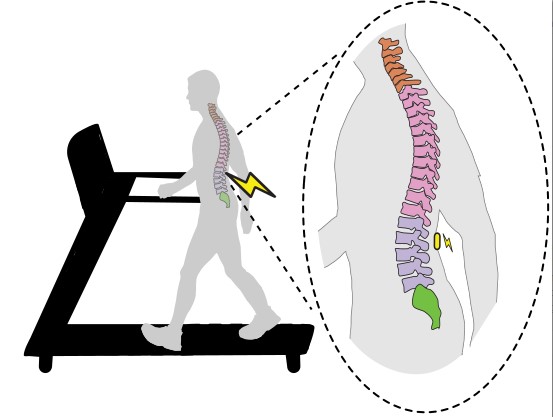Overview
Body
Despite advances in stroke rehabilitation, more than two-thirds of the 7 million stroke survivors in the U.S. still struggle to walk independently in their communities. Most current therapies focus on stimulating the brain areas that control leg movement, yet many stroke survivors continue to face issues like poor coordination, spasticity, and muscle weakness. We propose a different approach—using electrical stimulation of the spinal cord to improve walking after stroke.
The objective of this study is to evaluate the effectiveness of transcutaneous (non-invasive) spinal cord stimulation on gait and balance function for individuals with hemiplegia due to stroke.

The study also aims to identify parameters that distinguish responders from non-responders to transcutaneous spinal cord stimulation in individuals with chronic stroke. The study involves two arms:
- A test-retest crossover design to evaluate the short-term effects of tSCS + gait training in individuals with chronic stroke
- A randomized control trial to determine the long-term effects of tSCS + gait training in individuals with chronic stroke.
Subject Population
Body
- 18 years or older
- Able and willing to give written consent and comply with study procedures
- At least 6 months’ post-stroke
- Hemiplegia secondary to a single stroke
- Functional Ambulation Category of 2 or greater – i.e., subject needs continuous or intermittent support of one person to help with balance and coordination
- Not currently receiving regular physical therapy services
- Physician approval to participate
Study Personnel
Mentioned Profile

Arun Jayaraman, PT, PhD
Executive Director, Technology & Innovation Hub (tiHUB); Director, Max Näder Center for Rehabilitation Technologies & Outcomes ResearchStudy Partners
Funding Source
Body
National Institutes of Health
Participation
Body
Want to participate in this study? Fill out this interest form.

